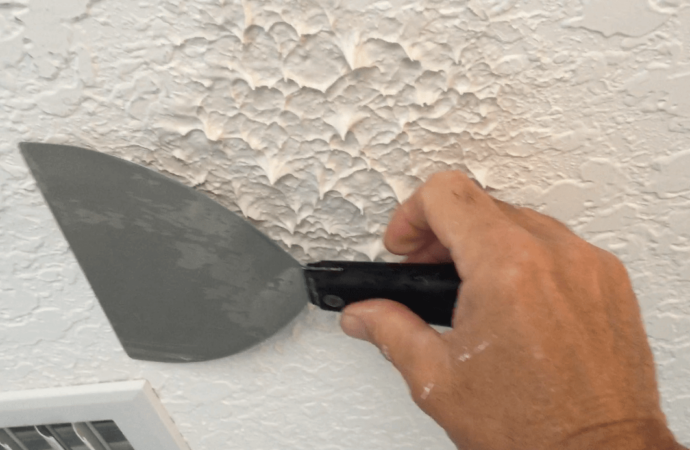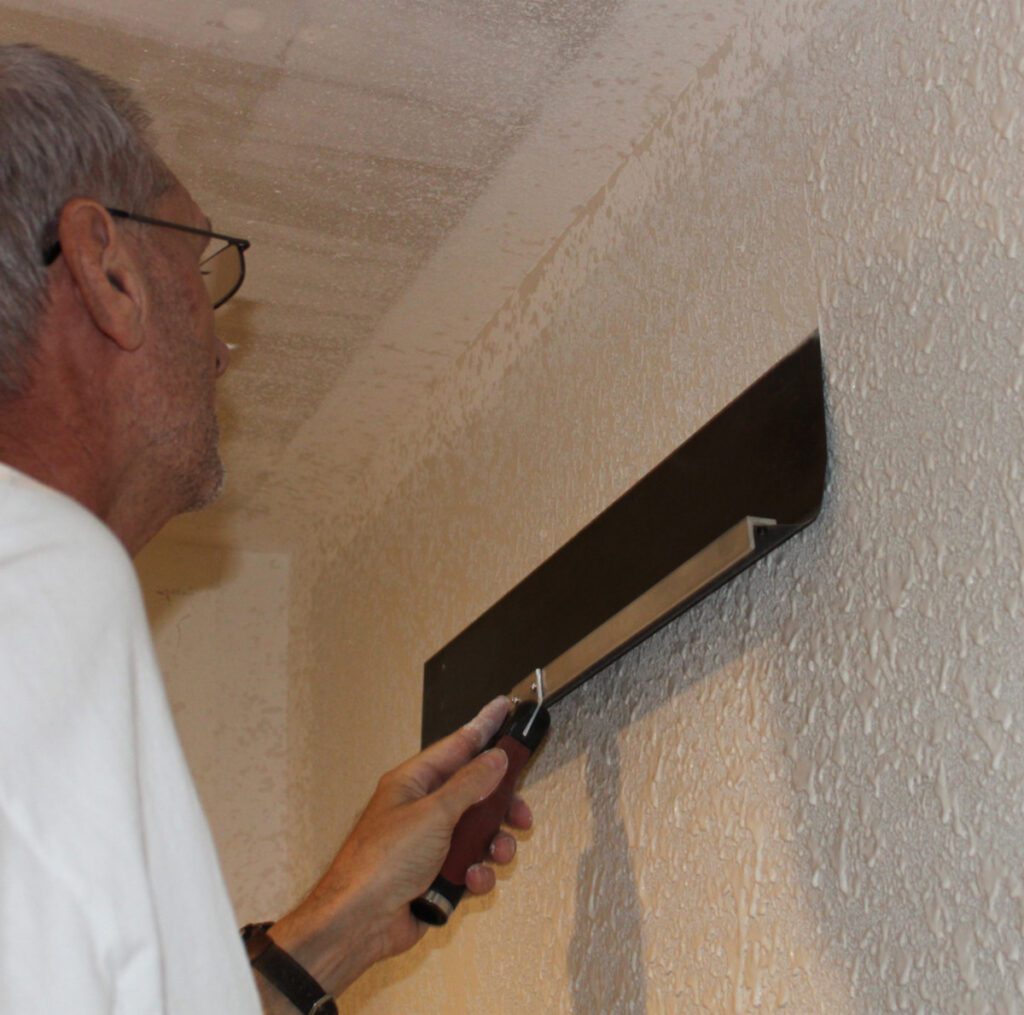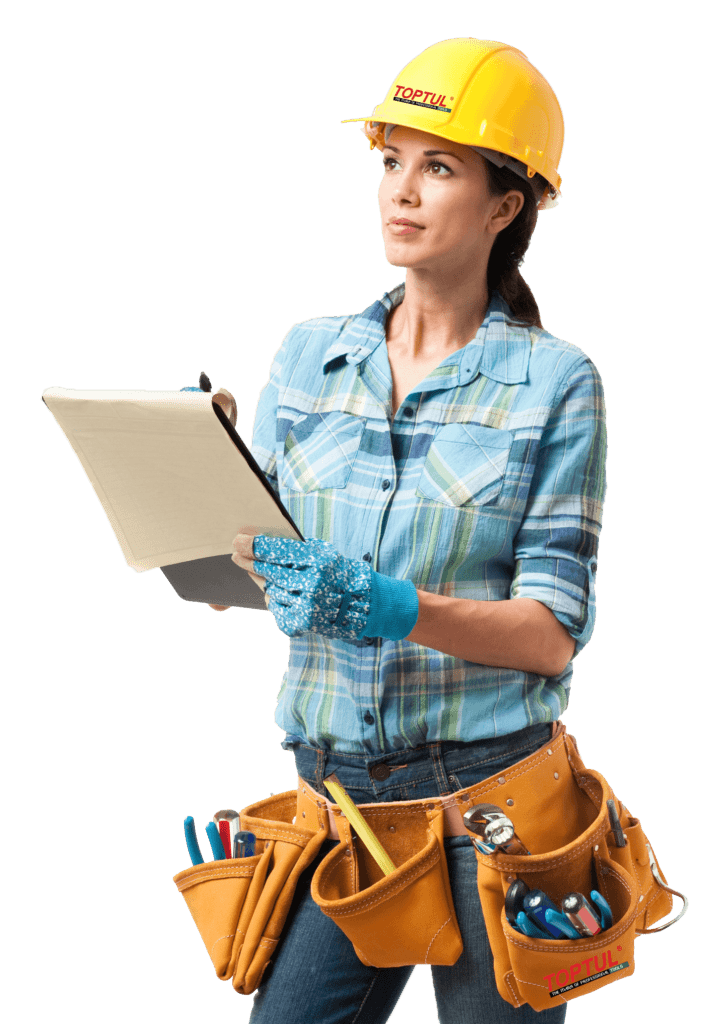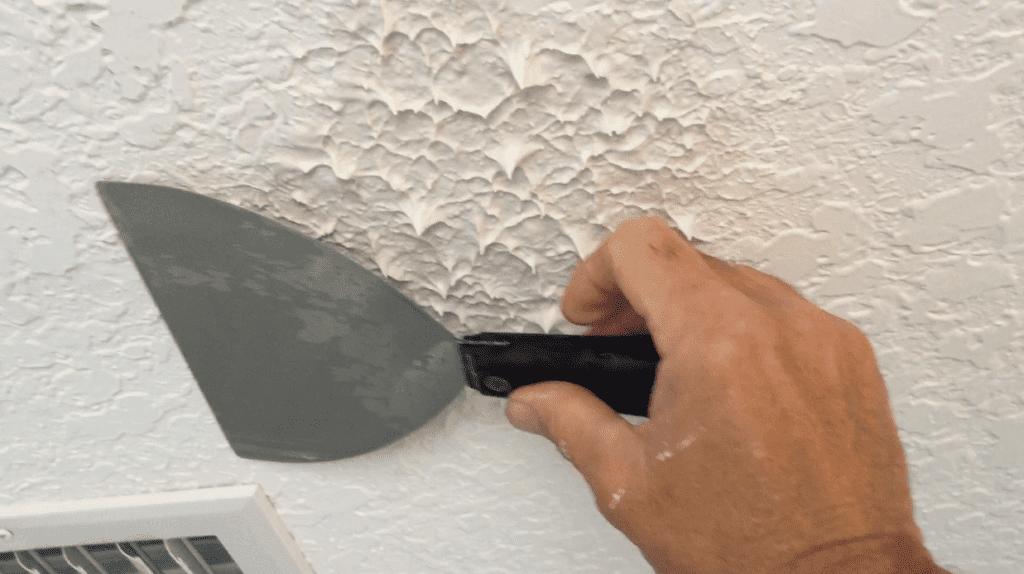Are you looking for an innovative idea for your backyard patio or pool deck? West Palm Beach Popcorn Ceiling Removal & Drywall Pros recommend knockdown textures for concrete. The knockdown finish used on horizontal concrete is similar to that found on drywall. The cement material is mixed with water and applied using a spatter brush. In some cases, the concrete can be screeded, troweled, and textured using rollers or stamping instruments. After application, the textured material should be “knocked down” using a trowel. To level high points, this is done after the material has dried partially but not completely. This creates a smoother, more consistent surface that is both comfortable and slip-resistant. The knockdown method is used to add color and texture to gray concrete. Furthermore, many knockdown experts claim that the finish keeps the surface cool on hot summer days. Although knockdown finishes can be relatively simple to install and design, experts in the art of knockdown painting stress the importance of following proper techniques and practices to ensure that the finish meets the desired durability and performance parameters. Preparation and precise measuring are the most important things. Inspection is an essential step in preparation. This will allow you to check that the surface has not been coated or sealed. To ensure that the overlay adheres and penetrates, it is crucial to determine if a concrete surface with a hard-to-reach area should be scarified or ground. It would help if you also masked adjacent areas to protect against overspray. West Palm Beach Popcorn Ceiling Removal & Drywall Pros state that a Sundek system typically includes a polymeric coating type material. This system is used to bond the substrate with a primer or bonding agent and a base coat of cementitious products. Often, this cementitious product is a polymer-modified one. A final coat can be applied using the same cementitious materials but with a gun that sprays globules on most of the surface. Protective sealants can be applied to the knockdown surface using acrylic, polyurethane, or other chemical chemistries. The cementations mix arrives in dry bags. It is mixed on-site with water. Experts explain that the mixture is made up of Portland cement, sand, and other specialized additives. Some of these mixtures do not contain the polymer component. They say that his company uses cementations materials that have not been modified with polymer. Instead, the mix includes a colloidal silicon admixture, which they claim reduces the possibility of efflorescence. It increases concrete strength and density and reduces concrete shrinkage. The liquid colloidal silica is added to the mixture of water at the job site. The cementations mix is completed with cement, sand, and integral color. West Palm Beach Popcorn Ceiling Removal & Drywall Pros use a different approach to knockdown finishes than most contractors. Fisher said it doesn’t use a hopper gun for the final material. They also use the overlay’s traditional pouring, screeding, and troweling. Then, they use specially-designed rollers to create texture edges that can be knocked down using the troweling method. To give variety and uniqueness, you can knock it down differently. Knockdown textures don’t require a lot of texture creation using rollers. The timing of the finish is what will change. This can be adjusted. You can adjust this by doing it earlier when the mixture is more flexible. This will make the surface more suitable for projects where barefoot traffic will likely be frequent but still provide traction because of the peaks and valleys. For a driveway project, knockdown troweling will be done when the mixture has been more set up. This allows for more grip and relief in areas with a raised texture. They also suggest using different troweling techniques to create a variety in the texture. This involves moving the trowel in different directions than left and right. To make “movement,” you can also use an S-type curving motion. This produces a variegated texture instead of a repetitive or consistent knockdown. Concrete with knockdown does not automatically have a variegated texture. Experts say, “We try moving the trowel in different directions, so there is more variation.” Mixing too much water can cause the mix to become sloppy. To ensure consistency, move when you apply the product. Do not apply if the surface temperature is too hot/cold. Ideal air temperatures are between 60 F to 70 F. Before you start, make sure all your tools are in working order. Clean mixing buckets, the mixing drill apparatus, hopper gun, compressor, and trowels are all critical. Experts say, “If everything isn’t in order, problems will arise.” Professionals state that slip resistance is an important selling point for knockdown finishes, especially for commercial applications. Marketing attributes include rejuvenating aged concrete and plain gray concrete, with color and visual appeal. Before we get into the finishes, let’s briefly explain what drywall is. Contrary to the name suggests, drywall doesn’t cover the entire wall. It is only the outer part. The drywall is the sheet that covers your studs or joists within a stud wall. Instead of finishing concrete with finishes, drywall provides a smooth and consistent surface that you can work on. Gypsum boards are often used to make drywall. Gypsum is popular due to its durability, ease of use in construction/DIY, and fire-resistant properties. Gypsum board is made from minerals. Think of it as paper made of rocks. Gypsum board’s ability to withstand paint, adhesives and drywall mud allows homeowners to use all colors without fear. It is not enough to use drywall for finishing. You will want to add texture to your ceiling or walls. Plaster or drywall mud should be applied uniformly to a wall to achieve this. You will first need to prepare the drywall for these finishes. (Note: This assumes that your drywall has been prepared before construction). This is important because your finished work could be damaged, which can waste the effort and money you spent in the first place. Primer is used to help the drywall glue stick to your drywall. Primer alters the surface characteristics of drywall by applying a thin layer to ensure that it is uniformly dry. DIYers typically use water- or latex-based primers because they are easy to use. This step is essential regardless of the texture you choose for your wall finish. It’s a great DIY tip always to have all the necessary supplies. As time is critical for these finishes, you must have everything you need on hand. Too long could cause drywall mud to harden. Make sure you know the type of materials that you are working with. Water-Based vs. Oil-Based) Knockdown texture can be achieved by using dry-wall compound (often called mud) with specific techniques to achieve a particular look. This finish can be achieved by rolling, spraying, or troweling drywall compounds. Because it is not uniform, the knockdown texture can be mixed and matched to create a dynamic wall finish. Stomp, Trowel, and Splatter are the three main methods for applying knockdown texture. These types of knockdown texture finishes are named after the appearance achieved by each technique. Stomp is a method of applying a precoat of the drywall compound to the wall, then layering it with another coat, and finally stomping on the wall until you achieve your desired look. This will create a texture depending on the type of bruat used to “knock down the dry-wall material and create the dent.” Splatter is a method of spreading drywall mud on your wall. Then, you flatten it to extend it. Splatter texture will be more round than stomp. This technique is more difficult to control than the others, especially on a ceiling. The main advantage is the ease of application. It is typically done by spraying the mud on the wall. When applying drywall mud to your wall, troweling is a technique that uses a special trowel. It skips and skids along the border. This technique gives you a more durable texture than other knockdown textures. The skips make round shapes on the wall that looks like the paint is being sprayed onto it. This technique is the most time-consuming of all the others. It requires multiple applications to cover the entire wall. Knockdown texture is a popular choice for homeowners because of its versatility and ability to spice up a space. Knockdown texture is an excellent option for homeowners who want to control the look of their finished room. It’s also much more affordable than wallpaper. The quality of your knockdown texture depends on how skilled the person is at masonry. This means that you will need to work harder to achieve this look. It requires attention to detail and precision. It would be best if you also remembered that drywall texture could only be created quickly to avoid the drywall mud becoming too dry. You will need to clean the knockdown texture finish every other week. Dust can build up on the surface because of its creases and little dents. It’s common for parts of the finish that protrude to show through to crack and flake occasionally. Keep some paint handy to cover these areas. Finally, it depends on how you make your knockdown texture. It can scratch furniture or leave marks if it moves against the wall. We offer the above services at the following locations within West Palm Beach:
If you are located in Palm Beach County and you don’t see your city/area listed above, don’t worry! We cover all of Palm Beach County. Fill out the contact form above or CLICK HERE and send us a message. We’ll get back to you asap!
Knockdown Textures
Contact Us

Proper preparation
Cementations material supply
Here are some tips and tricks

These are the basics.
Drywall and Finishes
Knockdown Texture
Stomp
Splatter

Locations We Serve

